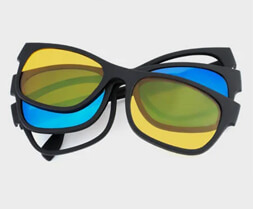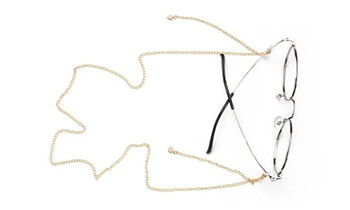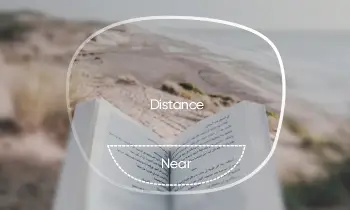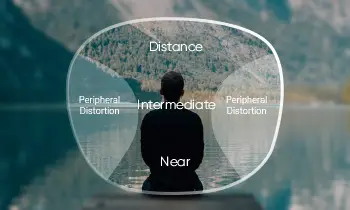Strong winds from thunderstorms can create a wall of dust and debris known as a dust storm. This wall of dust can be several thousand feet high and stretch for miles. Dust storms occur in various parts of the world, with the Middle East and North Africa experiencing the most. However, dust storms can occur in the United States, particularly in the Southwest region where they are prevalent during spring. Dust storms contribute significantly to the amount of dust in the Earth's atmosphere, with an estimated 44 billion pounds (20 teragrams) of dust present at any given time.
Dusty weather can easily cause eye damage
For this, it goes without saying that we can all know the dangers of sand and dust through past experience. Especially for the cornea, sand and dust floating in the air can easily cause redness, itching, dryness, and foreign body sensation in the eyes. This is mainly due to the increased level of pollution in the air and the increase in pollutants that can easily cause infections and eye inflammation if they enter the eyes improperly protected or if hands touch the eyes and face without cleaning.
Although our eyelashes can block some sand and gravel in normal times, in a sandstorm, due to factors such as high winds and fine particles, these small sand or dust may be blown into the eyes, causing the eyes to open and the foreign body sensation to increase, and if you can't resist rubbing your eyes, then it is likely to cause corneal scratches and lead to infection.
The discomfort caused by these conditions may not be directly inflammatory at the time, but will often develop within a few days, so do not take this lightly, even if you think it is not a problem at the time.
Exposure to a dust storm can increase the risk of several eye diseases, including conjunctivitis, corneal abrasions, and dry eye syndrome. These eye conditions can cause a range of symptoms and can lead to significant discomfort and vision problems if left untreated.
1. Conjunctivitis, also known as pink eye, is a common eye disease that can be caused by exposure to a dust storm. It is an inflammation of the thin, transparent membrane that lines the inner surface of the eyelid and covers the white part of the eye. Symptoms of conjunctivitis include redness, itching, swelling, and a discharge from the eyes.
2. Corneal abrasions are another common eye condition that can be caused by exposure to a dust storm. They occur when the cornea, the clear, dome-shaped surface that covers the front of the eye, is scratched or damaged. Corneal abrasions can cause pain, sensitivity to light, blurred vision, and a foreign body sensation in the eye.
3. Dry eye syndrome is a condition that occurs when the eyes do not produce enough tears or when the quality of the tears is poor. Exposure to a dust storm can exacerbate dry eye symptoms, causing redness, itching, burning, and a gritty sensation in the eyes.
4. In some cases, exposure to a dust storm can also lead to more severe eye diseases, such as uveitis or scleritis. Uveitis is an inflammation of the uvea, the middle layer of the eye, and can cause pain, redness, blurred vision, and sensitivity to light. Scleritis is an inflammation of the white outer coating of the eye and can cause severe eye pain, redness, and sensitivity to light.
How to do eye protection in sandy weather?
When it comes to protecting your eyes during sandy weather, there are several measures you can take to minimize your risk of eye damage. If you are particularly sensitive to dusty weather or are in a high-risk group, such as children or the elderly, it may be best to avoid going outside altogether during a dust storm.
If you must go out, there are several types of protective gear you can use to shield your eyes from sand and dust particles. This includes wearing a mask, hat, and eyeglasses or goggles. If you already wear glasses, you can wear wrap-around glasses that provide additional protection from dust and wind. For those who ride bicycles, it is recommended to wear a safety helmet with a windproof mask or protective goggles.
If you wear contact lenses, it is best to switch to frame glasses during dusty weather. If you must wear contact lenses, use daily disposable lenses, which can be discarded after a single use, or clean them with a care solution and rinse them thoroughly to remove any sand or dust particles that may have accumulated on the lens.
In addition to these measures, it is also important to keep your windows and doors closed and use an air conditioning system or air purifier indoors to minimize the amount of dust and sand that enters your living space. Keeping your eyes lubricated with eye drops can also help to prevent dryness and discomfort caused by sandy weather.
By taking these precautions, you can help to protect your eyes and minimize your risk of developing eye diseases or damage caused by exposure to sand and dust during a dust storm.
If dust enters the eye, do not rub the eye with your hand. Generally, after the eye is stimulated, a large amount of tears will flow out in response to the stimulation and the dust will also flow out. If there is still no outflow, consider using water, saline, or preservative-free artificial tears to flush the eyes until the foreign body sensation disappears. If you have any eye discomfort that continues to develop during dusty weather, please visit your eye care provider promptly for an examination.



































